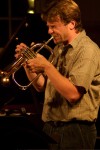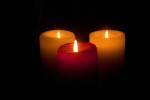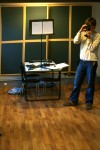In this blog entry I’ll introduce you to the use of dirt-cheap lenses for your Canon EOS 20D, 350D, 10D or whatever EOS camera you prefer. It may be a bit lengthy, but then again it can save you lots of money if you plan to buy new lenses. (or it can cost you lots if you don’t really plan on doing this. ![]() Beware!)
Beware!)
Let me start by quoting Bot Atkins’ EOS FAQ: Is there any point in using manual focus lenses? I think the answer is generally no, not unless you have to. I found this to be the general view of the Canon DSLR amateur community on the net. What I saw, though, was all the beautiful pictures taken before the auto-focus lenses came about. I remember all the fun I had with my father’s Yashica camera and his lenses were by no means bad. And throw in the fact that the reason I bought my 20D was that I wanted to do more manual work and that I more often than not use my lenses on manual focus, I decided I wanted to try some older lenses.
Now, I think there is only one EF-M lens, a manual-focus-only lens. However, as Bob will tell you, there are lots of different standard-mounts for older lenses, and there are EF adapters for most of them. The adapters fall into two categories, adapters that require optics to maintain infinity focus and those that don’t. The lenses that don’t use Contarex, Contax RTS, Leica R, Nikon, Olympus OM, Pentax K, Pentax Screw (also called M42), Petri Bayonet, Ricoh Bayonet, T2 mount or Yashica FR/FX mounts. The lenses that require optics use Canon FD, Konica F, Minolta MD or Miranda mounts. The mounts that don’t require optics are in general cheaper and keep the lens characteristics, while the ones that require optics usually enlarge the image somewhat and decrease the light transmitted. For instance, the Canon FD adapter zooms 1.26 times and decreases the light transmitted by 1/3 stops. My recommendation would therefore be to get lenses that require an adapter without optics for wide-angle lenses and adapters that require optics for telelenses.
The lenses I’ve focussed on have been M42 mount and Canon FD mount lenses. The adapters have cost me $5 and $35 on eBay. The weird thing is that the FD mount lenses usually cost way much more than equivalent M42 lenses cost, and that’s even though you loose 1/3 stops of light and can’t really use it for wide-angle photos. A thing that has been a bit of a problem is that not much information is available through Google about the lenses you may be offered, while we’re used to extensive reviews on new lenses that arrive on the market.
For this post I want to introduce you to two lenses: my 72-162mm f/3.5 Hanimex FD mount lens which has become my concert-lens of choice for its relatively large aperture for what becomes the 35mm equivalent of 145-327mm f/4. Look at the pictures and by all means give me feedback to what you think of them:



The next lens is a 37mm f/2.8 Russian MIR-1 M42 mount lens. Unlike the previous one, it has no extra magnification or light-stops so it stays at f/2.8 and is a 35mm equivalent of 59mm:


Now, please note that I haven’t gone after these lenses for maximum sharpness. A lot of reactions I’ve got have been on sharpness and you certainly get sharper lenses. But I like the feel of these lenses. Keep watching my photoblog and I’ll be sure to post new pictures of other exciting lenses and I’ll get back to you with a 28mm f/2.8 M42 mount, a 35-75mm f/2.5 and a 500mm f/8 FD mount and later on extention tubes and bellows

Follow Me
Follow me online and join a conversation